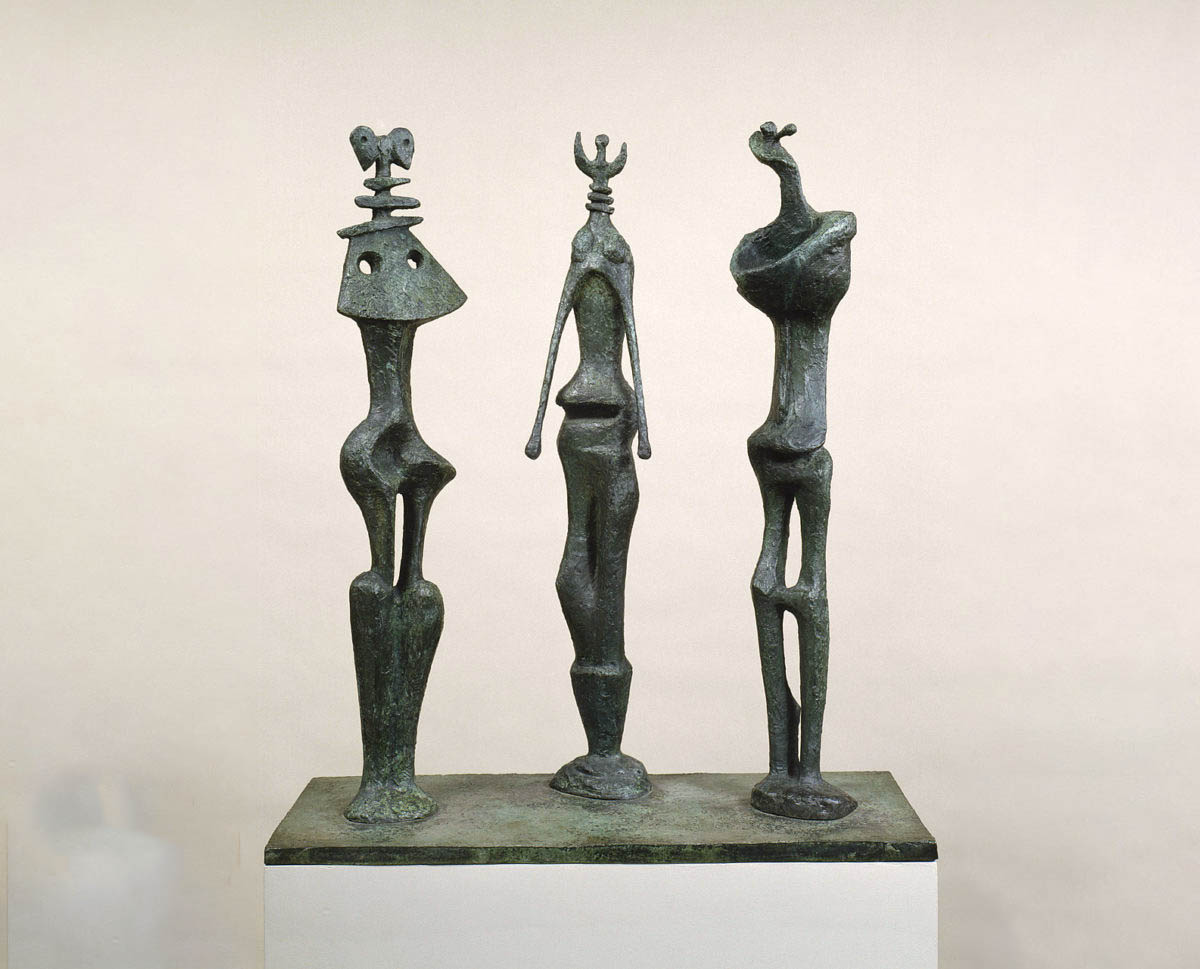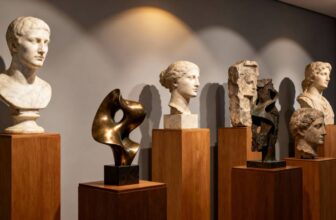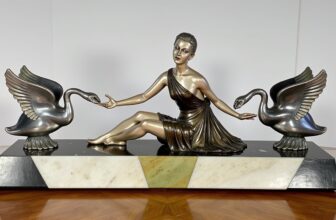
Why Collectors Are Drawn to Henry Moore Sculptures
The Enduring Appeal and Rising Demand for a Modern Master’s Work
Henry Moore (1898–1986) stands as one of the most celebrated sculptors of the 20th century. His monumental bronzes, sensuous organic forms, and ability to evoke both human intimacy and primal power have captivated audiences for generations. Today, decades after his passing, Moore’s works continue to command extraordinary prices at auction, anchor major museum collections, and attract an ever-expanding circle of passionate collectors.
But what exactly makes Henry Moore’s sculptures so desirable in the art market? Why does he remain a collector’s dream, and what explains the enduring appeal and rising demand for his masterpieces in today’s global art world?
This in-depth exploration dives into the aesthetic, historical, and cultural dimensions that fuel the ongoing fascination with Moore’s work , from his artistic innovation and symbolism to the emotional resonance and investment potential of his sculptures.
Why Collectors Are Drawn to Henry Moore Sculptures
Collectors are often drawn to Henry Moore’s sculptures for their distinctive visual language , an elegant synthesis of abstraction and nature that feels timeless yet profoundly human. Moore’s art is instantly recognizable: reclining figures, mother-and-child motifs, and semi-abstract shapes that bridge the gap between human anatomy and geological formations.
Moore’s fascination with organic forms , stones, bones, shells, and landscapes , translated into a sculptural vocabulary that feels both ancient and modern. For collectors, this universal visual language has immense appeal. A Henry Moore sculpture can appear simultaneously prehistoric and futuristic, monumental and intimate.
The Balance Between Abstraction and Humanity
Unlike many of his contemporaries, Moore never completely abandoned the human figure. His abstracted forms retain a palpable sense of life and emotion. This humanistic quality resonates deeply with collectors who seek works that evoke empathy and timeless beauty rather than pure formal experimentation.
Moore once said, “The human figure is the basis of all my sculpture.” This grounding in humanity gives his works emotional depth, making them enduringly relatable. Whether displayed in a garden, museum, or private residence, a Moore sculpture creates a dialogue between the human spirit and the natural world , an experience collectors cherish.
The Power of Material and Scale
Collectors are equally captivated by Moore’s mastery of material and scale. His use of bronze, stone, and wood demonstrates technical virtuosity, while his sense of proportion invites both tactile and visual engagement. Even in small maquettes or editions, Moore’s sculptures seem monumental, commanding attention and presence.
Large outdoor bronzes like Reclining Figure: Arch Leg or Hill Arches exemplify this duality of strength and serenity. For collectors, owning a Moore , whether a small bronze or a monumental work , means possessing a piece of this mastery of material and form.
Why Henry Moore Remains a Collector’s Dream
From private art enthusiasts to major institutions, Henry Moore remains a dream acquisition. His reputation as one of the pillars of modern sculpture ensures lasting cultural relevance, while the rarity and craftsmanship of his works make them coveted assets in the global art market.
Provenance and Authenticity
Collectors prize Henry Moore’s sculptures not only for their beauty but also for their impeccable provenance. Most of Moore’s bronzes were cast in limited editions, carefully supervised by the artist and authenticated through the Henry Moore Foundation. This meticulous documentation gives buyers confidence in authenticity and value , crucial factors in high-end collecting.
Museum Validation and Global Recognition
Moore’s works are housed in the world’s leading museums: the Tate in London, the Museum of Modern Art in New York, the Art Gallery of Ontario, and the Hirshhorn Museum, among many others. Such institutional endorsement amplifies his prestige and market stability. Collectors know that owning a Moore means owning a piece of art history recognized at the highest level.
Investment Value and Market Performance
Over the past few decades, Moore’s sculptures have consistently performed well in the art market. His works have set records at major auction houses such as Christie’s and Sotheby’s, with iconic bronzes fetching millions. For collectors who view art as both passion and investment, Moore’s market stability and global desirability make his pieces particularly attractive.
Notably, demand for Moore’s work is not confined to Western markets. Collectors in Asia and the Middle East have increasingly sought out his sculptures, driven by an expanding interest in postwar Western art. This internationalization of demand further solidifies his status as a blue-chip artist.
The Enduring Appeal of Henry Moore’s Masterpieces
To understand the enduring appeal of Henry Moore’s masterpieces, one must look beyond the market and into the emotional, philosophical, and symbolic layers of his art. Moore’s sculptures resonate because they touch something primal and universal , the connection between body, nature, and spirit.
The Human Connection
Moore’s recurring themes , the reclining figure, the mother and child, the sheltering form , explore the essence of human existence. These motifs transcend time and culture, speaking to fundamental experiences of life, protection, and renewal. Collectors often describe owning a Moore as having a “presence” in their space , a silent, grounding companion that evokes calm and contemplation.
Nature and the Landscape
Another cornerstone of Moore’s appeal lies in his relationship to nature. Many of his sculptures are designed to interact with light, shadow, and the natural environment. When placed outdoors, the works seem to breathe with the landscape , shifting in character as seasons and sunlight change.
Moore himself said, “Sculpture is an art of the open air. Daylight, sunlight, is necessary to it.” For collectors with gardens, estates, or architectural spaces, his works transform the environment into living art. The connection between sculpture and setting is a defining part of Moore’s magic.
Spiritual and Symbolic Depth
Beneath their tactile surfaces, Moore’s sculptures carry layers of symbolism. His reclining figures can be seen as meditations on rest and mortality, his mother-and-child forms as archetypes of creation and continuity. These works evoke not just aesthetic pleasure but philosophical reflection.
For collectors, this depth of meaning enhances emotional attachment and long-term engagement. A Moore sculpture reveals new dimensions with time , a quality that sustains its appeal long after acquisition.
The Rising Demand for Henry Moore Sculptures
In recent years, there has been a noticeable resurgence of interest in Henry Moore’s work. Collectors, curators, and investors are rediscovering his genius in the context of today’s art world, where authenticity, timelessness, and craftsmanship are increasingly valued.
Market Trends and Record Sales
Auction data over the past decade shows a steady climb in demand for Moore’s sculptures. Major works have achieved prices exceeding £20 million, while smaller bronzes and drawings continue to appreciate steadily. Even lithographs and maquettes , once considered entry-level collectibles , have experienced increased demand as Moore’s larger works become rarer in the marketplace.
Part of this rise is driven by generational transition: as private collections are passed down or sold, new buyers enter the market seeking pieces with historical weight and aesthetic integrity. Moore’s works, with their universal appeal, often top these wish lists.
Global Reach and Institutional Exhibitions
Exhibitions and retrospectives worldwide have also contributed to Moore’s renewed visibility. The Henry Moore Foundation continues to promote his legacy through scholarly publications, exhibitions, and conservation efforts. Each major show introduces new audiences to his work, fueling collector enthusiasm.
Moreover, Moore’s art aligns with current global tastes emphasizing organic design, sustainability, and humanistic aesthetics. His forms harmonize effortlessly with both modernist architecture and contemporary interior design, making them desirable for both traditional and modern collectors.
The Emotional and Philosophical Renaissance
Beyond market forces, the rising demand for Moore sculptures reflects a broader cultural shift toward authenticity and meaning in art. In an age of digital imagery and conceptual minimalism, Moore’s tactile, emotionally resonant sculptures offer something deeply grounding.
Collectors today crave works that inspire mindfulness and permanence , values that Moore embodied throughout his career. His art reminds viewers of continuity between humanity and nature, offering a sense of calm and connection in an increasingly fast-paced world.
Collecting Henry Moore: What Makes It Special
Accessibility Across Scales
While monumental outdoor sculptures command headlines, Moore’s smaller bronzes and works on paper make his art accessible to a wider range of collectors. These pieces retain the same sculptural essence and philosophical depth as his large-scale works.
Owning a small Moore , perhaps a reclining figure or maquette , allows collectors to engage intimately with his artistic vision. Many start with a small piece and gradually build toward more significant acquisitions.
The Role of the Henry Moore Foundation
The Henry Moore Foundation, established by the artist in 1977, plays a critical role in maintaining the integrity of his legacy. It provides authentication, organizes exhibitions, and supports education and research. For collectors, this institutional backing ensures transparency and long-term value.
The Foundation’s stewardship also helps regulate the market, preventing unauthorized casts and ensuring that Moore’s works remain among the most secure investments in modern sculpture.
Moore as a Long-Term Asset
While collectors primarily value Henry Moore’s sculptures for their artistic and emotional impact, their investment potential cannot be overlooked. Art market analysts consistently rank Moore among the top-performing sculptors of the 20th century.
Stability in Value
Unlike more speculative contemporary art, Moore’s market has shown remarkable stability. His sculptures are less subject to fashion cycles, and demand remains strong across decades. This makes Moore an ideal choice for collectors seeking both cultural and financial longevity.
Limited Supply and Lasting Demand
Because Moore’s bronze editions were carefully controlled and many large works are held permanently by museums, the available supply for private collectors is limited. Scarcity naturally fuels demand and ensures continued appreciation over time.
Emotional Return on Investment
Beyond financial metrics, Moore’s sculptures deliver what collectors often describe as an “emotional dividend.” The tactile beauty, meditative quality, and historical resonance of his work bring daily joy , a return that transcends money.
Henry Moore in the 21st Century
Henry Moore’s influence extends far beyond his lifetime. His exploration of form and humanity inspired generations of sculptors, from Barbara Hepworth to contemporary artists like Antony Gormley and Anish Kapoor.
As modern art evolves, Moore’s relevance only deepens. His emphasis on material honesty, organic form, and universal emotion speaks directly to contemporary concerns about nature, identity, and belonging. Collectors recognize that owning a Moore is not merely possessing a work of art , it is preserving a vital link in the lineage of modern creativity.
Public Art and Cultural Memory
Moore’s sculptures continue to define public spaces around the world , from London’s Kensington Gardens to Toronto’s civic plazas. This visibility reinforces his presence in cultural memory, ensuring that his work remains both familiar and revered. For collectors, owning a Moore connects them to this larger narrative of art shaping public consciousness.
The Timeless Magnetism of Henry Moore’s Art
Henry Moore’s sculptures embody a rare combination of aesthetic innovation, emotional resonance, and market integrity. Collectors are drawn to his work not only for its visual beauty but also for the profound sense of humanity it conveys. His art bridges the ancient and the modern, the personal and the universal , qualities that ensure his legacy endures.
As demand continues to rise globally, Moore remains a cornerstone of serious art collections and a beacon of enduring artistic excellence. For today’s collectors, acquiring a Henry Moore sculpture is more than an investment , it is a dialogue with history, nature, and the essence of what it means to be human. image/ guggenheim




